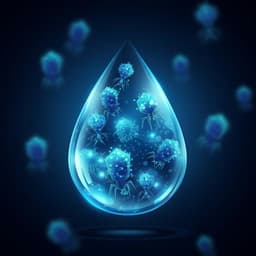
Environmental Studies and Forestry
Novel methods for global water safety monitoring: comparative analysis of low-cost, field-ready *E. coli* assays
J. Brown, A. Bir, et al.
This study explores innovative and cost-effective methods for detecting *E. coli* in drinking water, addressing the critical need for reliable water safety testing, particularly in low-income regions. Conducted by Joe Brown, Arjun Bir, and Robert E. S. Bain, the research demonstrates the effectiveness of modified membrane filtration and presence-absence tests compared to standard practices, providing a viable solution for large-scale monitoring of water safety in Bangalore, India.
~3 min • Beginner • English
Related Publications
Explore these studies to deepen your understanding of the subject.







